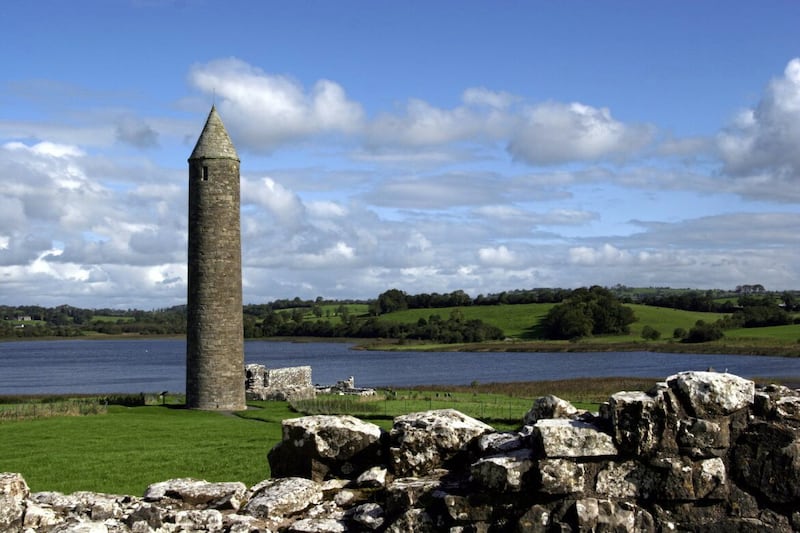Moving through the different moods of Celtic winter's dark November days, the landscape is almost stripped bare. On one of its brighter days of sunshine, and shadows, I spent some time at Trory point, close to Enniskillen, on Lower Lough Erne's shore, scanning the waters around Devenish Island.
It was there Saint Molaise established his monastery in the 6th century, and where one of Ireland's finest round towers, from the 12th century, stands tall by ruined church buildings nearby.
The island was also raided by the Vikings in 837 AD, and other monuments from different periods of history including a carved 15th century high cross, make the island a site of special historic interest.
The late Fr Peadar Livingstone, Monaghan priest and scholar, recounts in The Fermanagh Story (1969), his extensive history of the county, the narrative of how druids urged King Conall Mac Dáimhín to expel Molaise from the island: "The king gathered a force and marched to Lough Erne. On the way, however, his horses stuck to the ground. There they remained until Molaise released them. After this Conall gave Molaise the island."
Looking out from the pier, I observed some mute swans exuberantly preen between rolls and splashes through the fresh water, while several cormorants, in dark macabre pose, looked on from branches on the opposite shoreline. Some great crested grebes in pale grey and white winter plumage also kept company as several mallard hugged the water reeds beyond.
My attention was then diverted from water to sky as I heard the far-carrying harsh croaking call of a raven, and the swooshing sound of its beating wings before seeing the bird's glossy black frame, heavy bill and wedge-shaped tail steer across the lough, over the holy island.

This sight prompted musings about how the monks on Devenish would have been familiar with the evocative calls of this massive bird around the island, and shared stories of its mythical status and reputation for ill omen. I suspect, given the solitude on the island, they were, like many of their time, more sensitive to the sounds and sights of nature than some today.
Read more:
- Take on Nature: The owl's mystery, stealth and wisdom
- Take on Nature: A mouse for company
- Stephen Colton's Take on Nature: Chough a Celtic coastal fire raiser
Our largest corvid, Corvus corax, has for centuries been revered and feared in equal measure, as a harbinger of evil and death. Receiving the news that Duncan, King of Scotland, would be arriving with Macbeth at their castle, Lady Macbeth, her murderous plan in place, hints at the evil to come, saying,
"The raven himself is hoarse
That croaks the fatal entrance of Duncan."
The bird however is also noted for its problem-solving abilities and intelligence when finding food, traits our earliest inhabitants would have observed. It is known that ravens have a mutually beneficial relationship with wolves, often following them and profiting from their large kills.
Having located a dead animal by sight, ravens can also use various communication calls to lead wolves to its whereabouts, knowing carcass remains will be there when Canis lupus is finished. Research from Yellowstone National Park (Yellowstone Quarterly 2020 Spring issue), suggests "that individual ravens may even develop special bonds with individual wolves within a pack".
Fiach dubh, black raven is the bird's most used Irish name, but another is fiach sléibhe, mountain raven.
Irish myths often feature the raven, most notably perhaps in the story of the warrior Cú Chulainn's demise. Severely injured in battle, the legendary figure tied himself to a rock so he could die upright, his enemies only daring to approach after a raven landed on his shoulder, verifying his death. I never tire of watching this bird of myth and paradox.








